My Seventh Continent
Chapter 1
If I told you I went to Antarctica with the Shackleton party, I think you might doubt me, but it’s true. Six travelers, who are distantly related to one of history’s most renowned Antarctic explorers, Ernest Shackleton, were on board our ship, along with Bruce and me and 190 other travelers. We were on a two week expedition to South Georgia and Antarctica with a company called Quark, a leader in polar adventures.
Although February is summer in Antarctica, you wouldn’t know it by the four layers of clothes we wore to protect us from the wind and cold. Our trip began in Ushuaia, Argentina, the southernmost city in the world, where we embarked on our expedition ship called the Ocean Endeavor.
For three days we cruised east from Ushuaia on a relatively calm sea, and listened to scientists and experts lecture on the polar environment: the birds, (especially penguins), the whales (Humpback and Orcas), species of seals (fur, leopard, weddell), and the many glaciers we were about to see. Jonathan Shackleton told us inspiring stories about his cousin’s famous adventures in the early 1900s, which are classic tales of leadership and heroism. We heard from a biologist what it was like to spend a year at a scientific research station studying the sex lives of elephant seals. In between lectures and outstanding meals prepared by an awardwinning chef, we were out on the decks and up on the bridge with binoculars and cameras, scanning the skies hoping to photograph albatross (instead of cormorants), and looking out to sea where one might spot a pod of dolphins or a group of whales lunching on krill.
Finally we arrived in South Georgia, a crescent-shaped mountainous island with no permanent inhabitants, only penguins, birds, and seals. The island measures approximately 100 miles long and 24 miles wide, with half of its surface capped in ice, 12 mountains rising about 6,000 feet, and roughly 160 glaciers, many of which come down to the sea.
Preparing for a zodiac landing took a good bit of time as members of the ship’s staff carefully examined our backpacks and each item of outer clothing that we might wear — hats, head bands, scarves, balaclavas (protective face masks), and multiple layers of gloves. They looked for specks of dirt, tiny seeds, remnants of food or anything foreign that might possibly introduce non-native materials to the pristine environment we were about to visit. And if there was any doubt, our packs and the crevices of our outer clothing where microscopic pieces of lint or strands of hair might be found were thoroughly vacuumed. Then after putting on a heavy yellow waterproof parka and pants, our knee-high rubber boots, and a bulky life jacket, we stepped in and out of a chemically-treated water bath to sanitize our boots and to prepare us to step on to what many have described as another planet.
Sliding my legs over the side of a rocking zodiac in my bulky outfit and clumsily taking a few steps into the clear blue water and on to the rocky shore was not easy, but guides were there to help us and direct us to a place where we could leave our heavy life jackets and backpacks so we weren’t so loaded down. I carried only one camera — my new mirrorless Sony A7R II with a 24-240mm lens. This allpurpose lens worked best for me, giving me a wide-angle perspective and close up shots, which were relatively easy given that most of the penguins and seals were pretty close, some times no more than a few feet away. Also changing lenses in temperatures just a few degrees above freezing didn’t seem like a good idea.
During our lengthy landings on Salisbury Plain and Andrews Bay, I was filled with so much emotion that it’s really hard to explain. Many words of awe come to mind. Simply stated — I was overwhelmed. My eyes filled with tears as these strong but delicate looking penguins greeted me on the beach, flapping their wings and bobbing their heads, each making their own individual call. What struck me most was the privilege I had to step on this incredibly beautiful land in a very unique remote place, devoid of human life (except for an occasional tourist like me), but teeming with animals: fur seals, elephant seals, and the world’s largest colonies of king penguins in various stages of preening, egg laying, nesting, and molting. We were told that there were as many as 250,000 pairs, give or take a few thousand or so. And it’s true what they say about penguin poo. It’s really stinky, but by the end of our trip, I loved that fishy smell.
“Walk to the right of the red flags,” our guide said, pointing up ahead towards the penguin rookery. “Remember to try and keep 15 feet between you and the penguins.” Fifteen feet, I questioned? Yes, don’t walk closer than fifteen feet, but if they approach you, that’s a different story. The penguins were close and all around us.
As I walked closer to the rookery, before me was a sea filled with king penguins. An awe-struck adjective: Breathtaking! While individual penguins could be seen in the mass, the overall impression was abstract, like a painting of silver, black and white penguins nestled together, caring for the egg or feeding the chick. Another adjective: Deafening! (The cacophony is best heard, so please watch the YouTube video I posted below). My senses were in overdrive, as was my camera. I struggled to make sure I had the right settings, like aperture and shutter speed, since I’d never taken photographs of wildlife before and things change quickly. Up close and personal the king penguins did their special dance, squawking, rocking, and waddling so close to me that I could have stroked their smoothlooking feathers, touched their bright but sharp beaks, conveyed my emotions silently and expressed my feelings. I was experiencing the magic of nature — seeing them, smelling them, and wanting to touch them, communicate with them, call to them, but they paid no attention to me. They had their own thing going, making strange squawking sounds, shaking their heads, slapping each other with their strong wings as if to say hey you, go away. I was here first. The males vied for the female’s attention while a stranger like me made my own weird sounds. I pressed the camera’s continuous shutter — click, click, click. Then I remembered what our expedition leader told us the night before.
Watch. Listen. Absorb.
I put down my camera, sat on a small wobbly rock and got goosebumps as I watched, listened and absorbed.
The adventure continues…………
Cacophony of king penguins

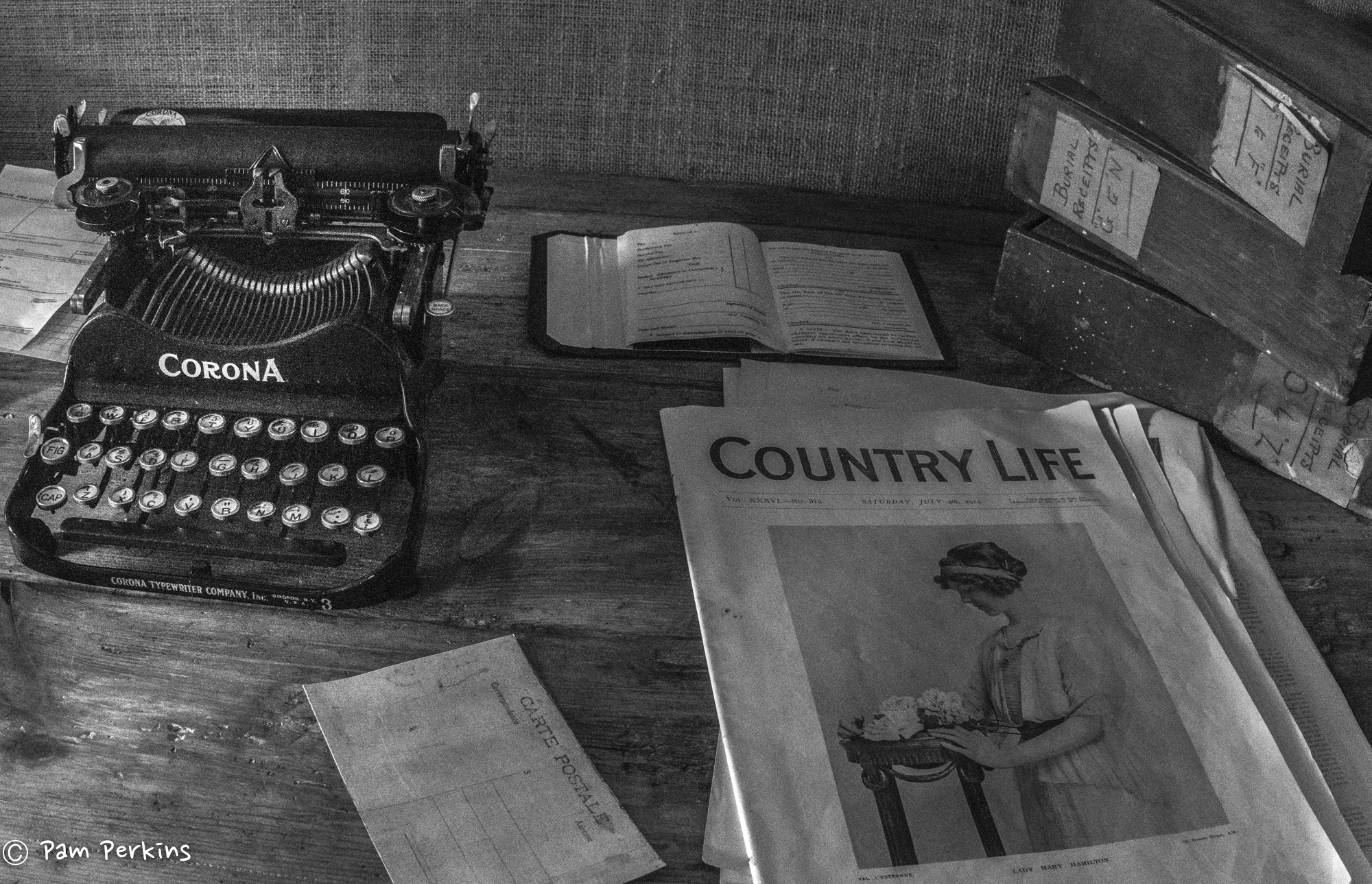
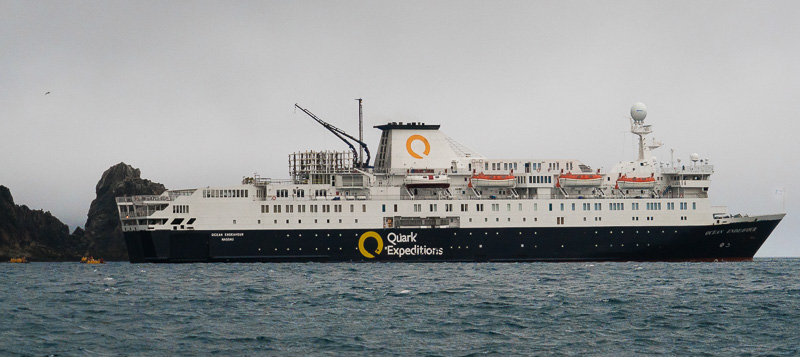

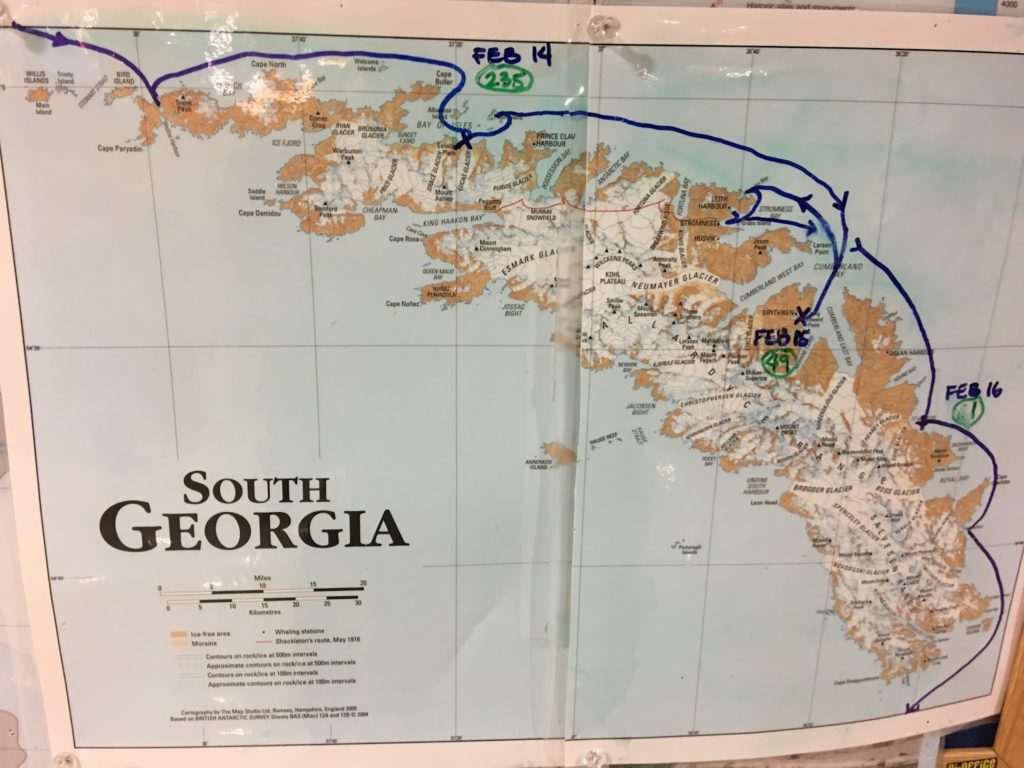



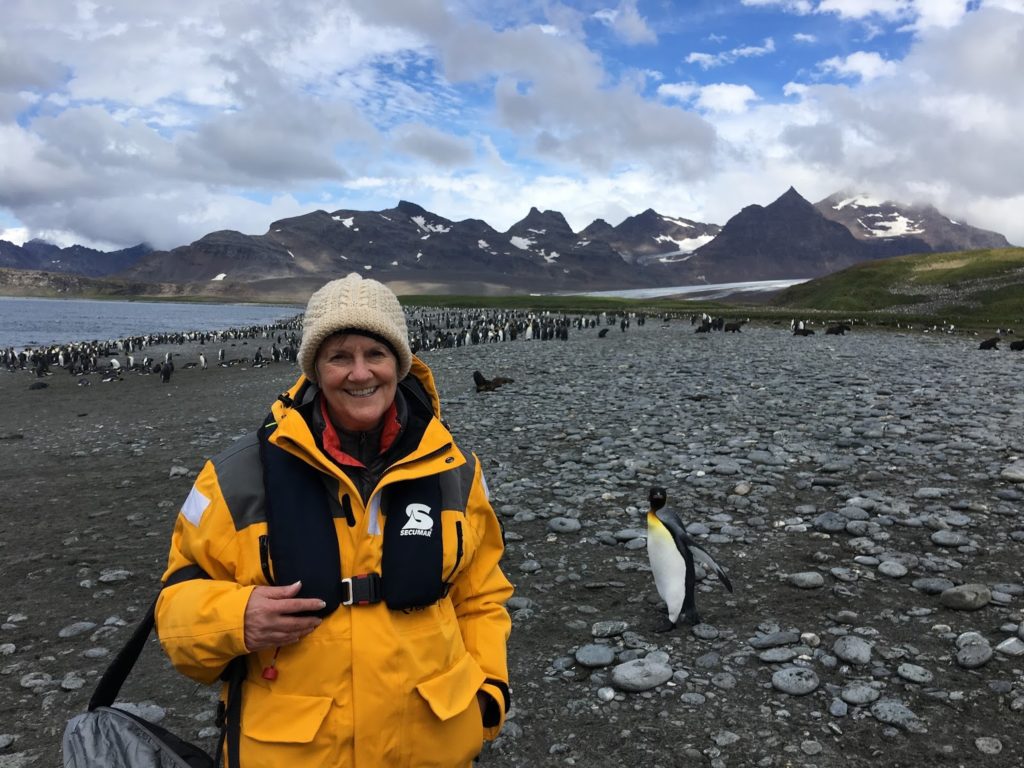
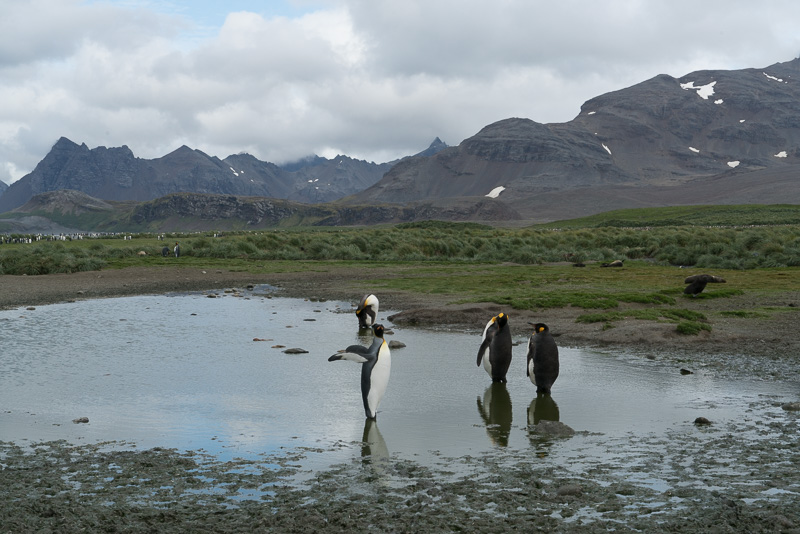

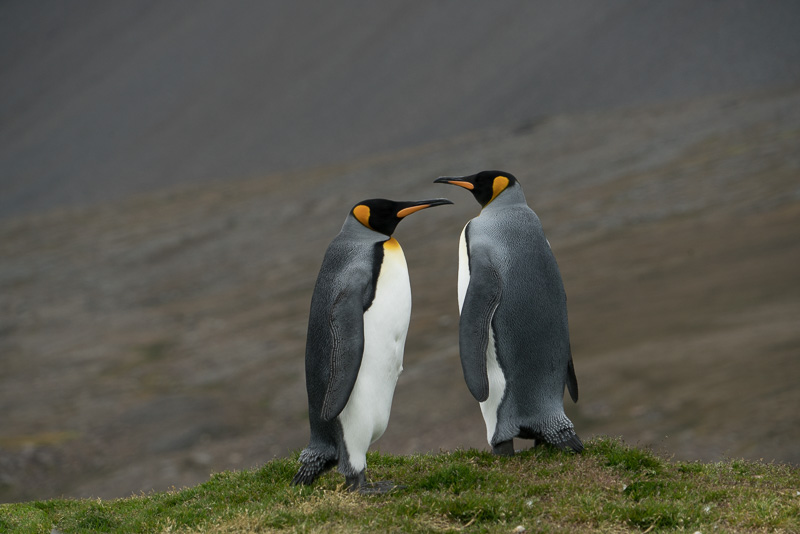

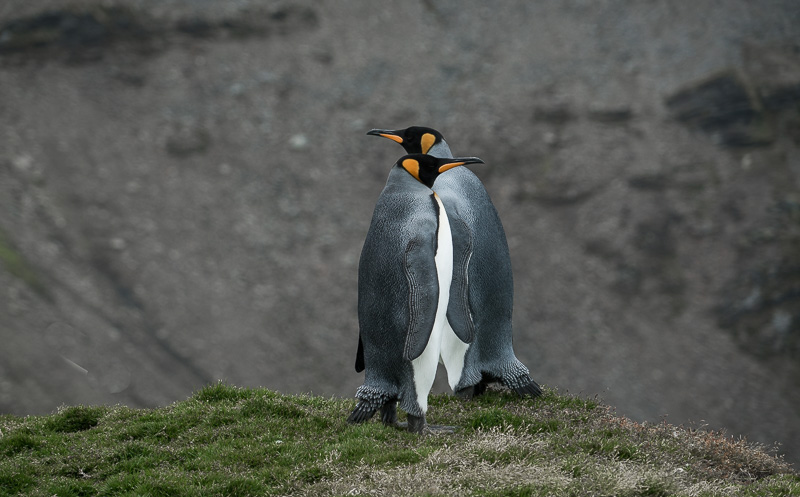
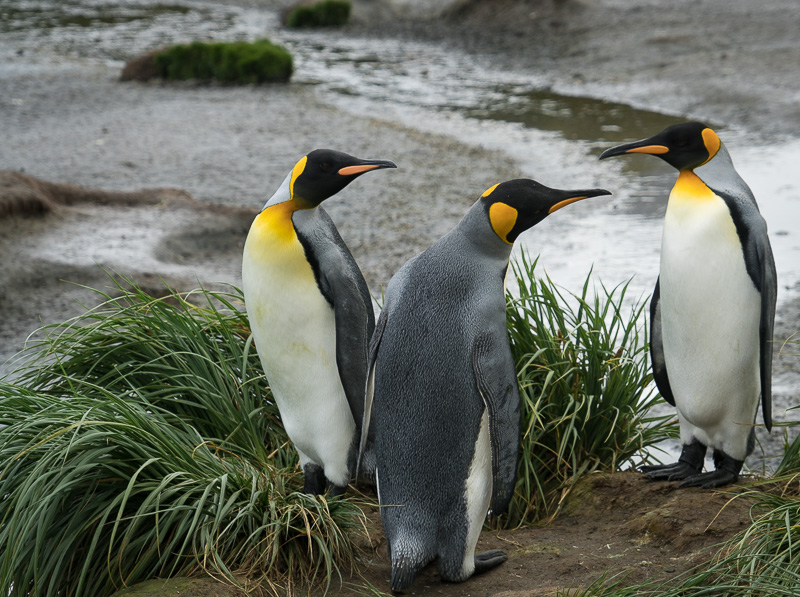
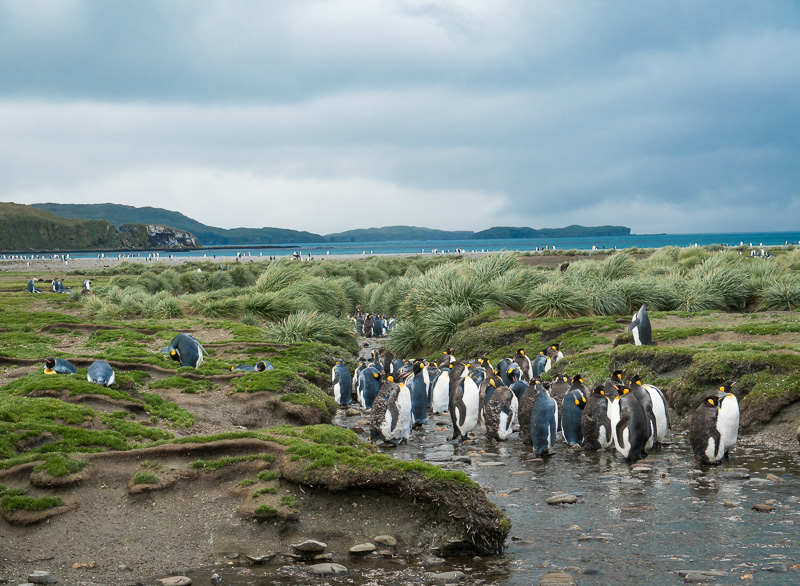
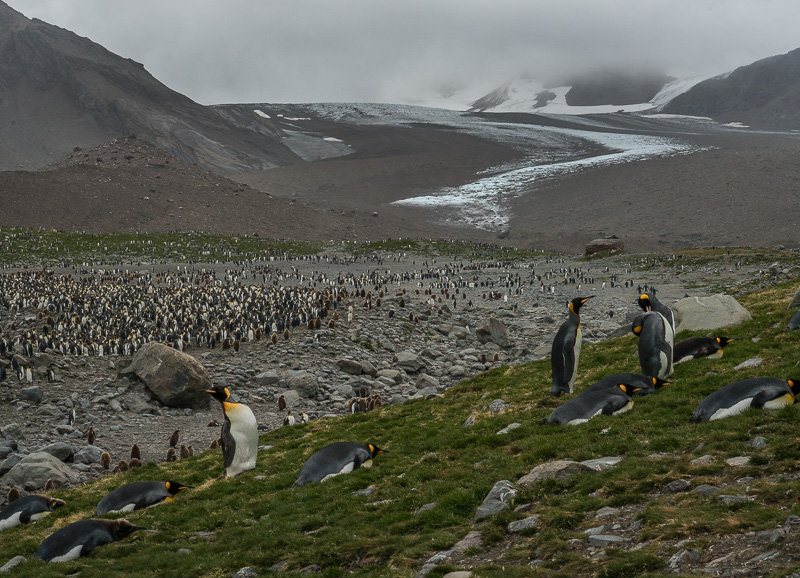
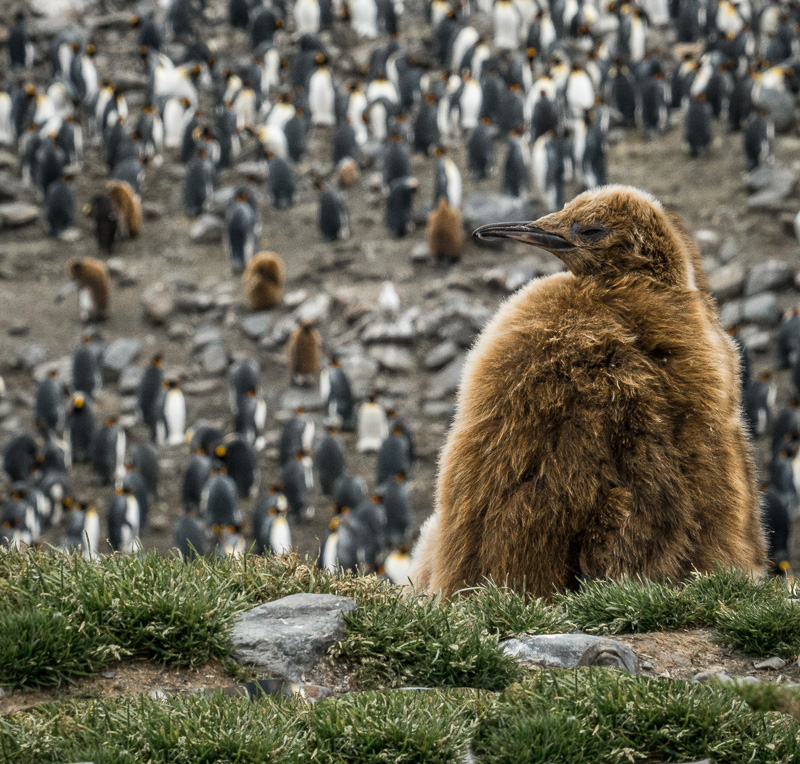

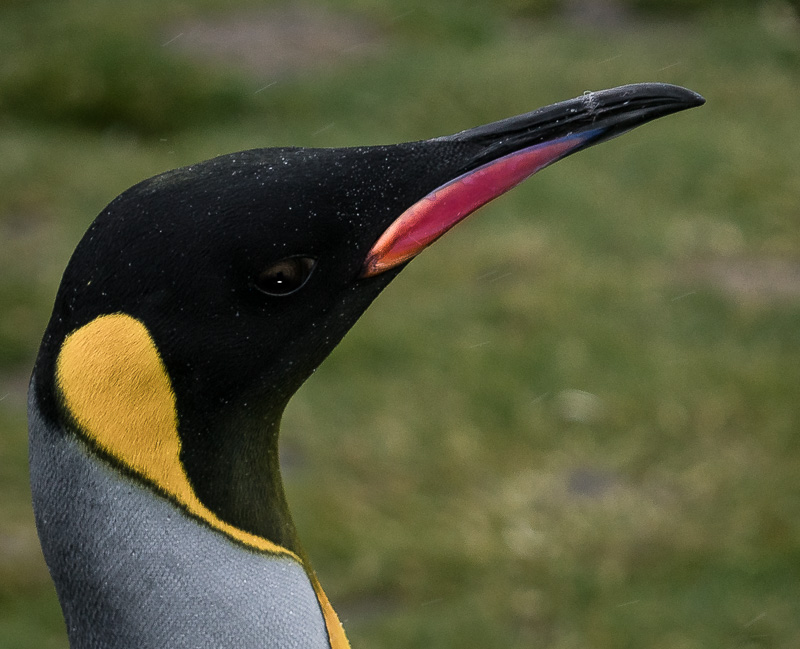
admin
July 26, 2017 at 4:22 pmThese photos are amazing!
Pam Perkins
July 26, 2017 at 4:55 pmThanks, Joyce. It was an amazing place (but your post did not come to my pam@
mail box).
Cindy Lougheed
July 14, 2018 at 7:48 amPam,
I just read your article this morning on the Quark newsletter…just reading it almost brought me to tears! I cannot imagine how I will be when we get there. We are headed on this trip with Quark in January 2019 on what they call a “Penguin Safari”! We are so excited for the trip and your article brought us right there. Any tips you have would be greatly appreciated! We are currently considering the camera gear we will take.
Thanks for the article!
Pam Perkins
July 14, 2018 at 11:06 amHi Cindy, Thanks so much for your lovely email. You are going to LOVE LOVE LOVE your “Penguin Safari,” which is the same trip we did. BTW I didn’t know my story was in the Quark Newsletter. If it came via email to you, would it be possible for you to forward it to me at pam@pamperkins.com. I know that they published an excerpt of a story I wrote in their 2017 fall catalog, but not the newsletter. I’d love to see it. My husband did an amazing 36 minute video of our trip which I think you would enjoy. However, he is unable to post it on YouTube because he used proprietary music. We are in the middle of a major remodel and addition (sounds like you know what that means!) so he’s not in a position to burn a disc for you, but I will check with him to see if he has an extra one. The camera I used is a Sony A7R11 with a 24-240mm lens. I brought a Canon with a longer lens, but found I didn’t need it because the animals are all around you, even the whales, but if you have a longer lens you like, bring it. The expansive focal length worked great for me. No one used a tripod. You might also bring a polarizer lens, but I didn’t use mine. I also bought gloves from B&H that enable you to expose two fingers to push the shutter. A godsend. Quark is extraordinary. I’m so jealous. I’d go back in a heartbeat, but alas it’s so expensive and besides I probably wouldn’t get Drake’s Lake on a second visit. Yes, we had very calm seas all the way down and back. The lectures were excellent, the food was terrific, the guests were interesting, and the staff couldn’t have been better. We also had five members of the Shackleton family on board. Perhaps Jonathan Shackleton will be the guest lecturer on your expedition.
Thanks for subscribing to my blog. I’ve been so wrapped up in this house project that I haven’t written much lately, but I would like to write something about this building process, especially at our age. I also have a few pictures from our trip on my Gallery page, but you have to scroll way down.
Where are you located?
Pam